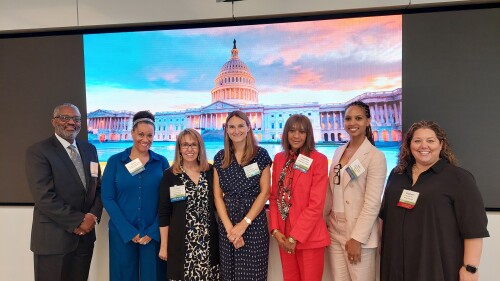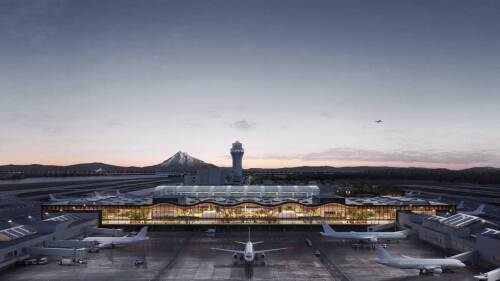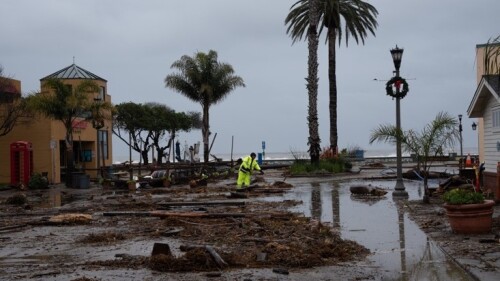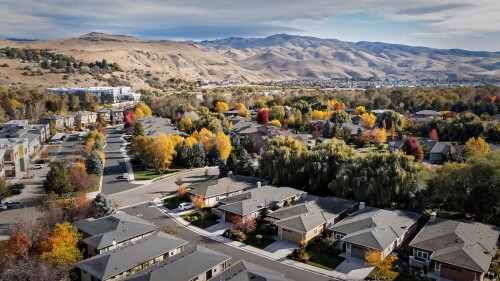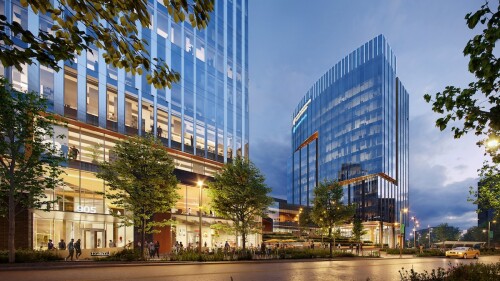Topics
Capital Markets and Finance
On Thursday, CREW DC, AAREP DC, and ULI Washington delivered the third and final program in a series intended to demystify valuations and provide practical insights on negotiating equity and debt.
RXR CEO and Chairman Scott Rechler, in a recent ULI members-only webinar with ULI Foundation Chair Faron A. Hill, described the challenges and opportunities ahead as an epic, unavoidable storm. “That hurricane … eventually, it’s going to hit land,” Rechler warned. “The question is when it hits, how hard it hits, and where it hits the hardest.”
The final day of the 2024 ULI Asia Pacific summit in Tokyo featured a capital markets panel with leaders from both European and North American funds, who shared their insights into the region’s real estate markets—and how those markets stack up against their global counterparts.
Design & Planning
Frequently cited as one of America’s best airports, Portland International Airport (PDX) will unveil its ZGF-designed, expanded main terminal in August, with completion set for 2025. Instead of building an entirely new airport, much of PDX’s existing infrastructure was reused.
New studies on urban planning continue to uphold ULI’s 2017 list of 10 best practices in creative placemaking. They underscore three of those practices as essential to optimizing the value of real estate development projects: shared vision, early artist/community engagement, and clear stakeholder benefits.
People are the lifeblood of any city, and they define the urban environment that we covet. Our cities have always been alive and dynamic. How do we keep them that way? One answer: ground-floor activation. When the right spatial considerations are met, cities stay dynamic and, in turn, help us all thrive. The design tactics we use at the ground level are second nature—energized, active frontages; mixed-use developments that open onto streets or plazas; punctuated by pedestrian-friendly design with clear signage and plenty of greenery.
Development and Construction
ULI has announced the appointment of Mick Cornett, the former mayor of Oklahoma City, as the ULI Canizaro/Klingbeil Fellow for Urban Development. Cornett served as mayor of Oklahoma City from 2005 to 2018, leading a major redevelopment plan for the urban core, securing an NBA franchise to the city, creating an entertainment district that now attracts 2 million visitors a year, and generating 80,000 new jobs.
Real estate investors recognize the need to incorporate physical climate risks—including wildfire, hurricanes, and excessive heat—into their business models as the prevalence and severity of extreme weather events increase. Climate-risk analytics tools have proliferated in recent years to help investors assess, price, and mitigate these physical climate risks. Investors have welcomed these tools but face challenges selecting the right provider—or providers—to meet their business needs.
The history of Denver is closely intertwined with the South Platte River. From the city’s initial settlement along the riverbanks in 1858 to subsequent urbanization that altered its natural course, the South Platte has played a significant role in Denver’s evolution. For much of the 20th century, however, metropolitan development turned away from this vital waterway.
Resilience and Sustainability
As global temperatures rise from accelerating climate change, extreme temperature swings‚ both cold snaps and heat waves‚ are causing increasing damage and disruption. However, extreme cold and storms that bring snow, ice, and freezing rain can receive less focus than warm-weather hazards such as blistering heat and powerful hurricanes.
A few key trends that evolved over the past few years and continue to shape the field of placemaking in 2025 reflect a growing commitment to sustainability, resource efficiency, and the responsible management of urban spaces.
This year, global ULI Greenprint real estate members reported a 6.3 percent year-for-year, like-for-like reduction in absolute carbon emissions. This result marks the second year in a row that members have reported a reduction of more than 6 percent in absolute carbon emissions—a testament to ULI Greenprint members’ leadership in making progress on their sustainability goals. In addition to leading by example, members continue to fund ULI resources that support the broader industry’s decarbonization progress.
Issues and Trends
Making infill development easier, adding a state role to local land-use controls, and connecting housing with transit were some of the top trends in housing policy that emerged on May 9 at the 2024 ULI/Charles H. Shaw Forum on Urban Community Issues. The forum topic, “State and Local Innovations to Expand Housing Opportunities,” reflected something that many communities around the United States are grappling with: dire housing shortages.
A panel of real estate experts convened by the Urban Land Institute (ULI) offered dozens of recommendations to create a more vibrant, active, and inclusive Downtown St. Louis by transforming the historic Gateway Mall, outlined in a new report.
A close look at trends shaping today’s best economic and talent hubs that offers valuable clues into how to create equitable, sustainable innovation districts that prosper.

